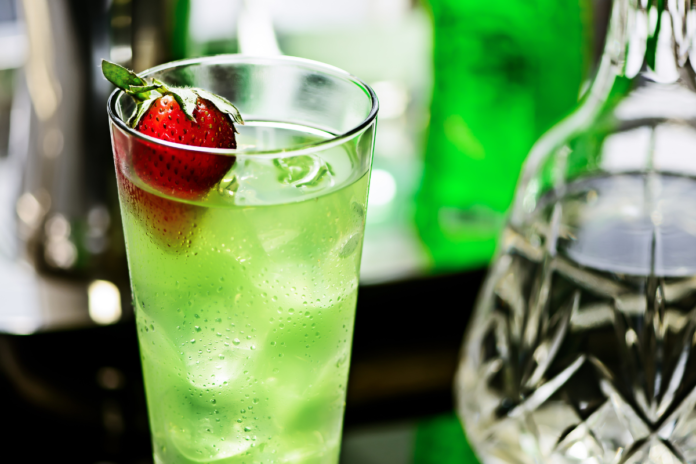When adding to your home bar, it can be quite challenging to determine what premium barware you want to use. One of the tools commonly used is a bar spoon, and if you’re questioning its usefulness, keep reading to learn about its history and uses.
What is a Bar Spoon?
As its name may suggest, a bar spoon is a spoon that bartenders and mixologists use to make cocktails. They are manufactured specifically to be used for bars, and they’re a necessity for any professional or home bar because of their functionality.
History
The history of a bar spoon is difficult to pin down because there are several different points in history where it could have originated from.
The main theory is that the bar spoon as we know it today evolved from the Sucket spoon, which is named after an English dessert that the tool used. This style of the spoon had a spiral shaft with a spoon on one end and a fork on the opposite. Sucket was a dessert that was served in syrup, which is what the fork was used for. In 1800s America, when fruit cocktails began to appear in bars, bartenders often served them with a Sucket spoon.
Uses
Bar spoons have a long history, and they can serve many different purposes in a home bar.
Stirring
Cocktails need to be either shaken or stirred; shaking requires a cocktail shaker, while stirring needs a bar spoon. No matter what size of glass you’re using, the bar spoon is the perfect tool because it is long enough to avoid hitting your hand on the glass.
Here are a few tips for stirring:
- Chill the glass beforehand. This chills the liquid without having to dilute it further with ice.
- Once the spirit has been added, place your bar spoon in before adding ice. This avoids splashing and stabbing.
- Use your fingers to stir, not your wrist. Using your wrist can result in cramps.
- When stirring, move the spoon around the edge of the glass, not in the center. This lowers the chance of splashing and is much quieter.
Measuring
A standard bar spoon is close to the equivalent of 1 tsp, and it is often used instead of a jigger or other form of measurement to measure out small quantities of liquids. For a home bar, this is perfect because it decreases the need to invest in other measuring tools.
Layering
Bar spoons, particularly those with twisted handles, are perfect for layering drinks and creating a unique look. The spirit, tonic water, or soda is poured down the handle of the bar spoon, where it spirals and layers on top of other liquids.
Garnishing
There are many options for garnishing cocktails, and a bar spoon can help both with garnishing and removing a garnish from a drink.
Muddling
A muddler is used to gently crush up ice, herbs, and fruit for cocktails. The European-style spoon has a small metal disk at the end that is perfect for muddling, and some of the bar spoon options with decorative pieces can also serve as muddlers.
Types
Though there are many different styles of bar spoons, there are three main types.
The American
This bar spoon can hold 5ml of liquid and evolved from the Sucket spoon from the 19th century. The American bar spoon is identifiable by its signature red cap at the end, and it is the least popular option out of all three options.
The European
In the 18th century, there was a spoon called the Mazagran spoon created by the French. Its original purpose was to crush ingredients for medicinal purposes, and this is where the European bar spoon was created from.
This version of the bar spoon has a small disk on the end, which is commonly used for muddling, layering, and crushing ice. It can hold 2.5ml.
The Japanese
Out of all three options, the Japanese is by far the most popular. It is elegant and sleek, with a weighted teardrop at the opposite end. It too can hold 2.5ml of liquid.
End Piece
There are various types of bar spoons available, and many of them differ at the end of the handle.
- Decorative Piece: Some bar spoons have a decorative shape at the opposite end of the spoon, and though it is not functional, it adds to the physical appeal of the spoon. Bar spoons with decorative shapes have become popular, and they tend to be heavier than other options.
- Fork: There are still bar spoon options with a fork on the opposite end, which is useful for garnishing drinks.
- Muddler: Some bar spoons are available with a muddler at the opposite end, which makes them even more functional. The muddler is used for crushing fruit, sugar cubes, and herbs for cocktails.
- Red Cap: The small rubber red cap is a characteristic of the American bar spoon, and they are the simplest, cheapest bar spoon available on the market. Still, they usually work just as well as other options.
Handle
The handle of bar spoons tends to vary as well, both in length and texture.
Long vs. Short
Bar spoons are typically long, measuring at least 12 inches in length. However, some bar spoons have longer lengths, which are becoming more commonplace in bars. The length of a bar spoon doesn’t really play into its function. after a certain height; it’s more of a personal preference of feel.
Standard-size bar spoons are much easier to find, so there is an increased likelihood of finding one in a style you like, and they are not as difficult to store as longer bar spoons can be.
Bar spoons with longer handles have an extra weight, which can actually make them feel more comfortable in your hands and can stir more quietly. They are also very nice to look at.
Smooth vs. Spiral
The shaft of the bar spoon can also vary. Traditionally, they were available with a spiral shaft, which helped with layering. Still, there are options with smooth handles that function just as well.
Because of its many functions, a bar spoon is absolutely essential for a home bar. The best quality of bar spoons is the many different styles and designs that are available.










